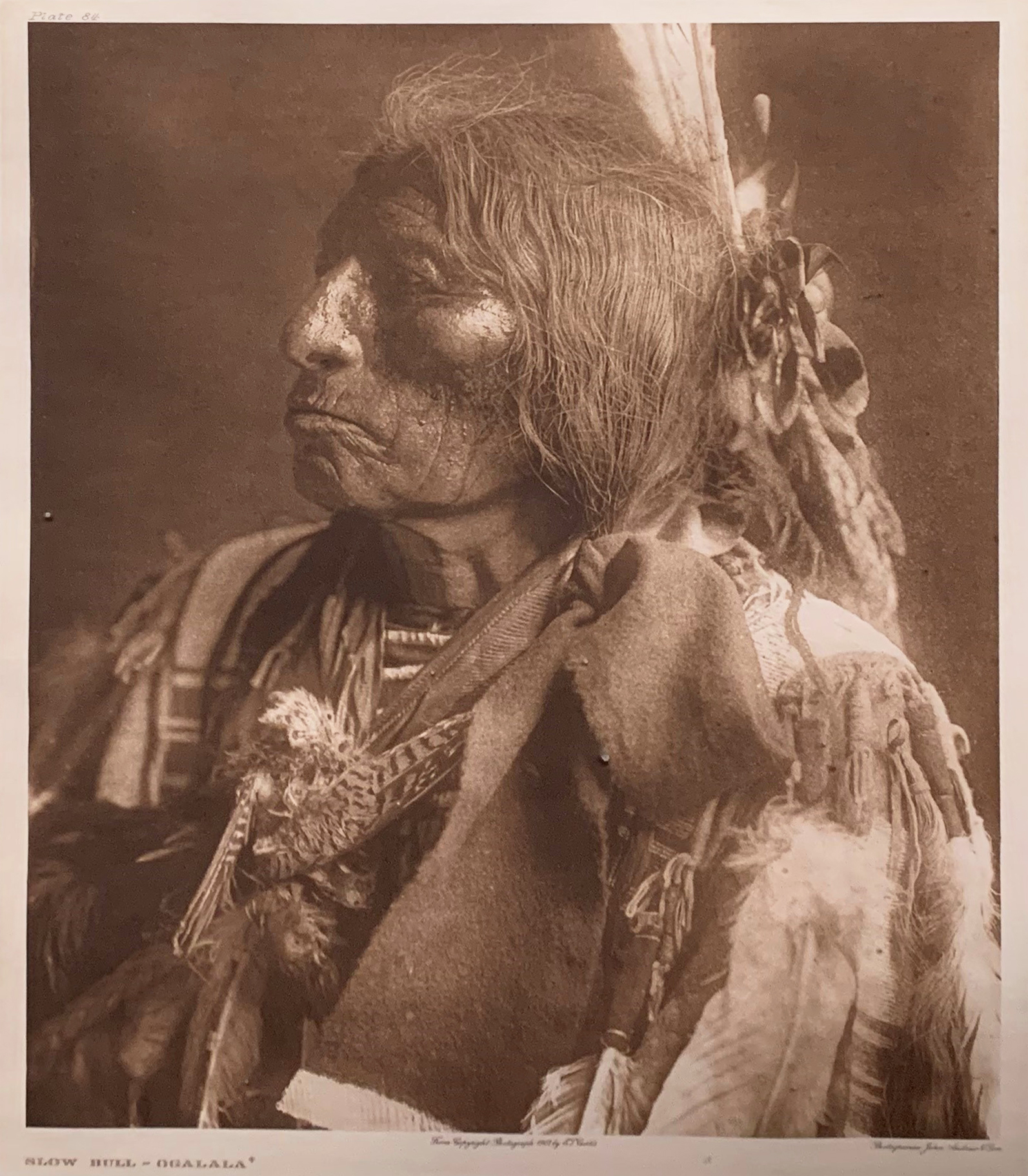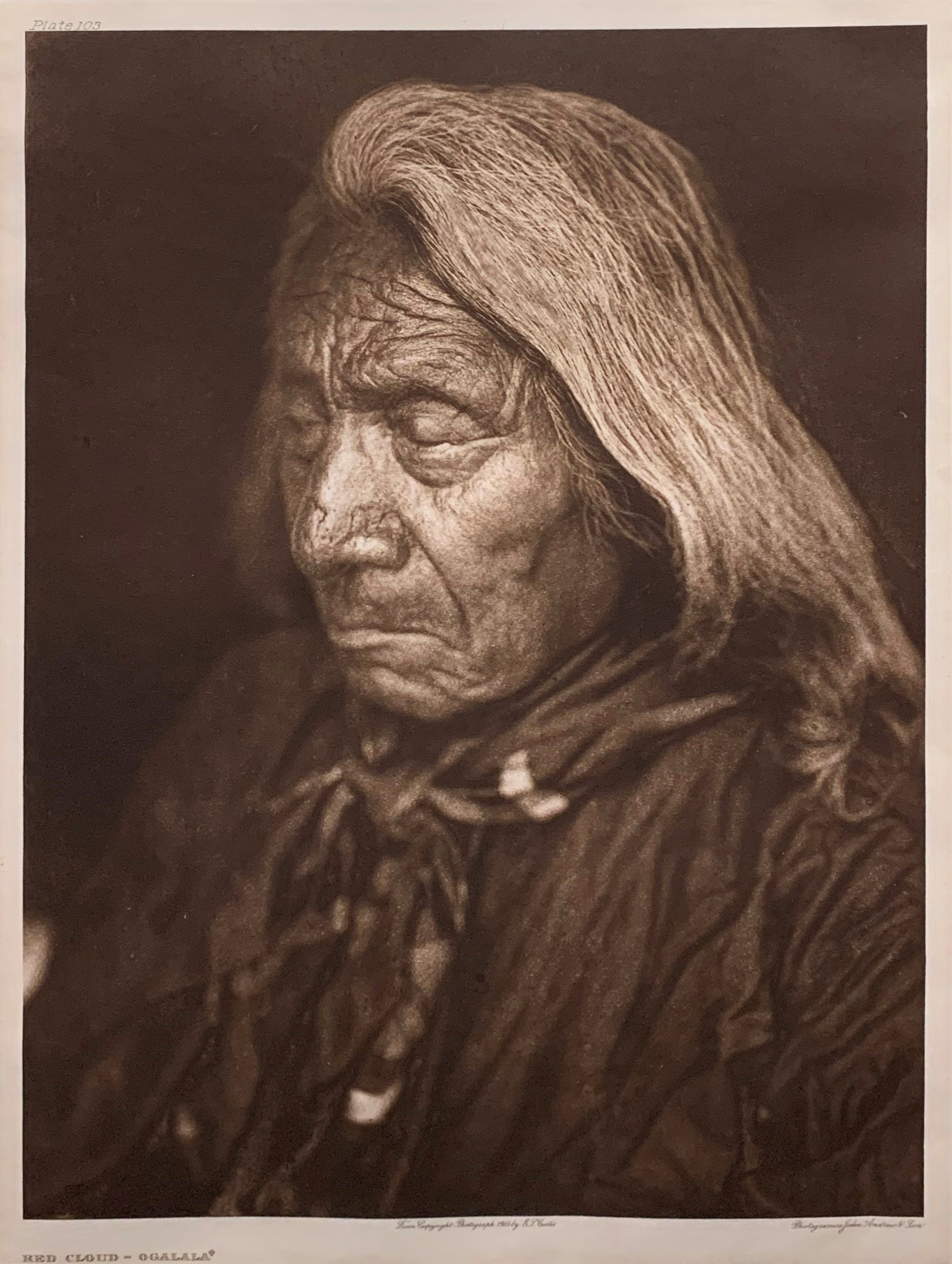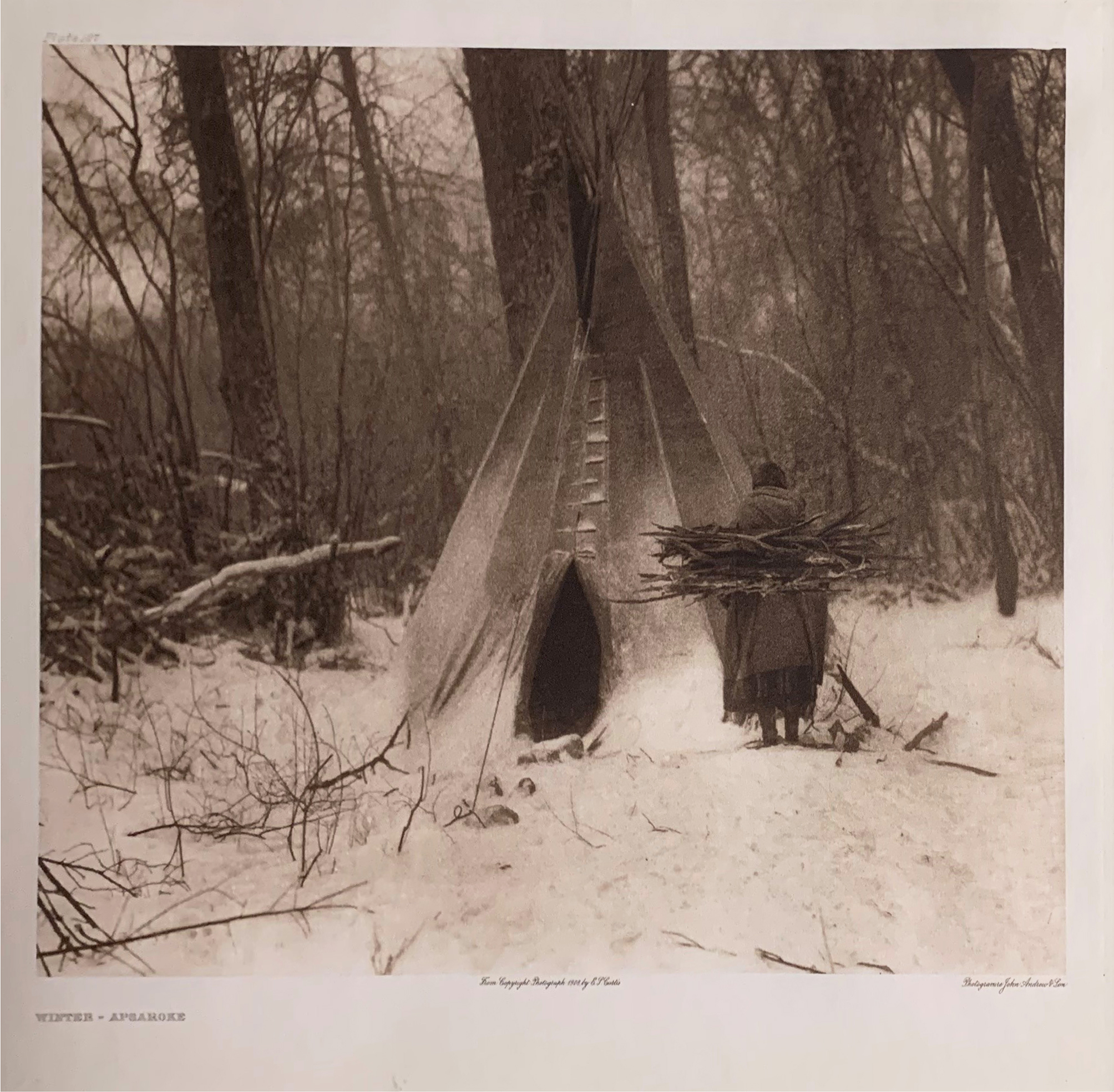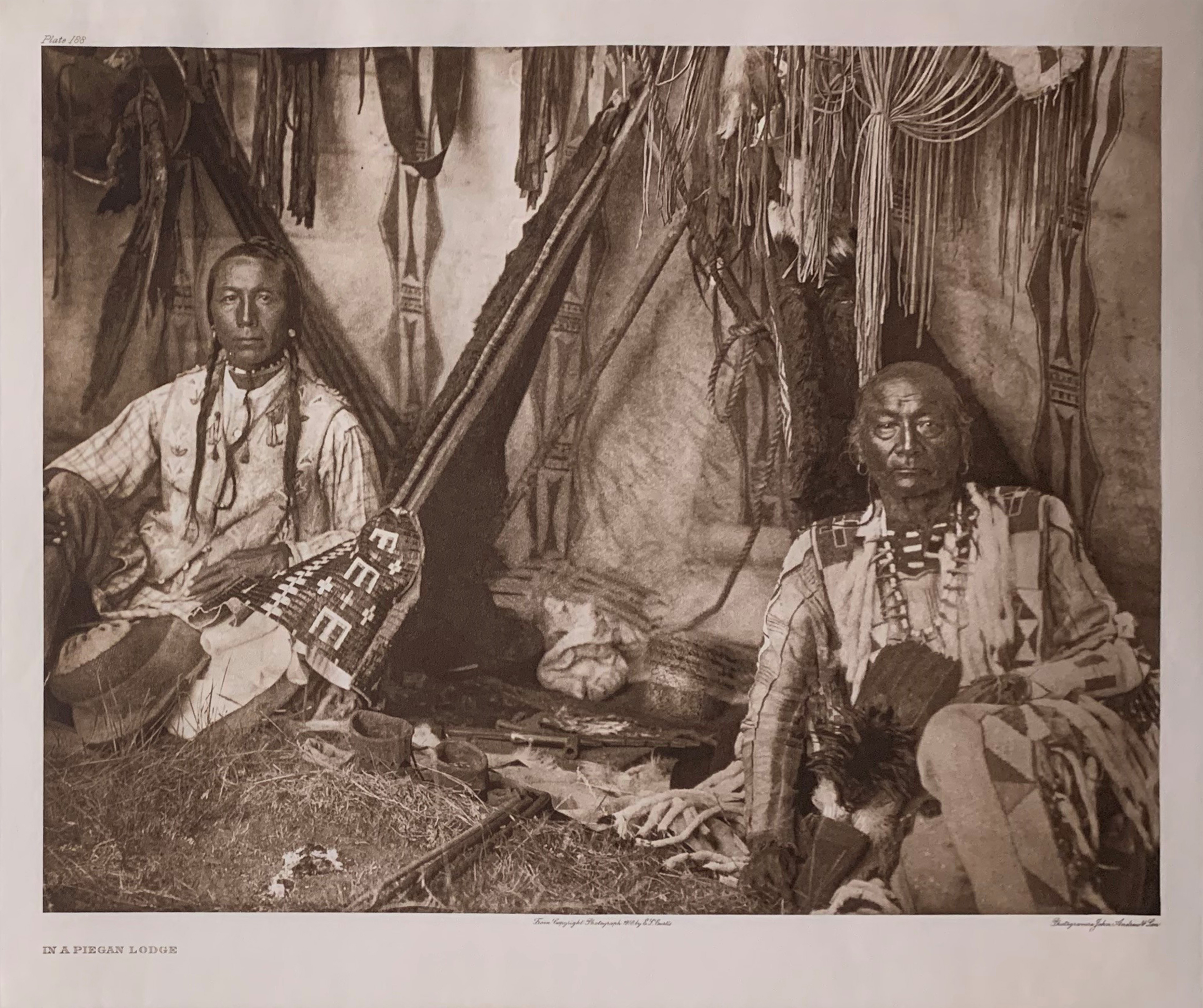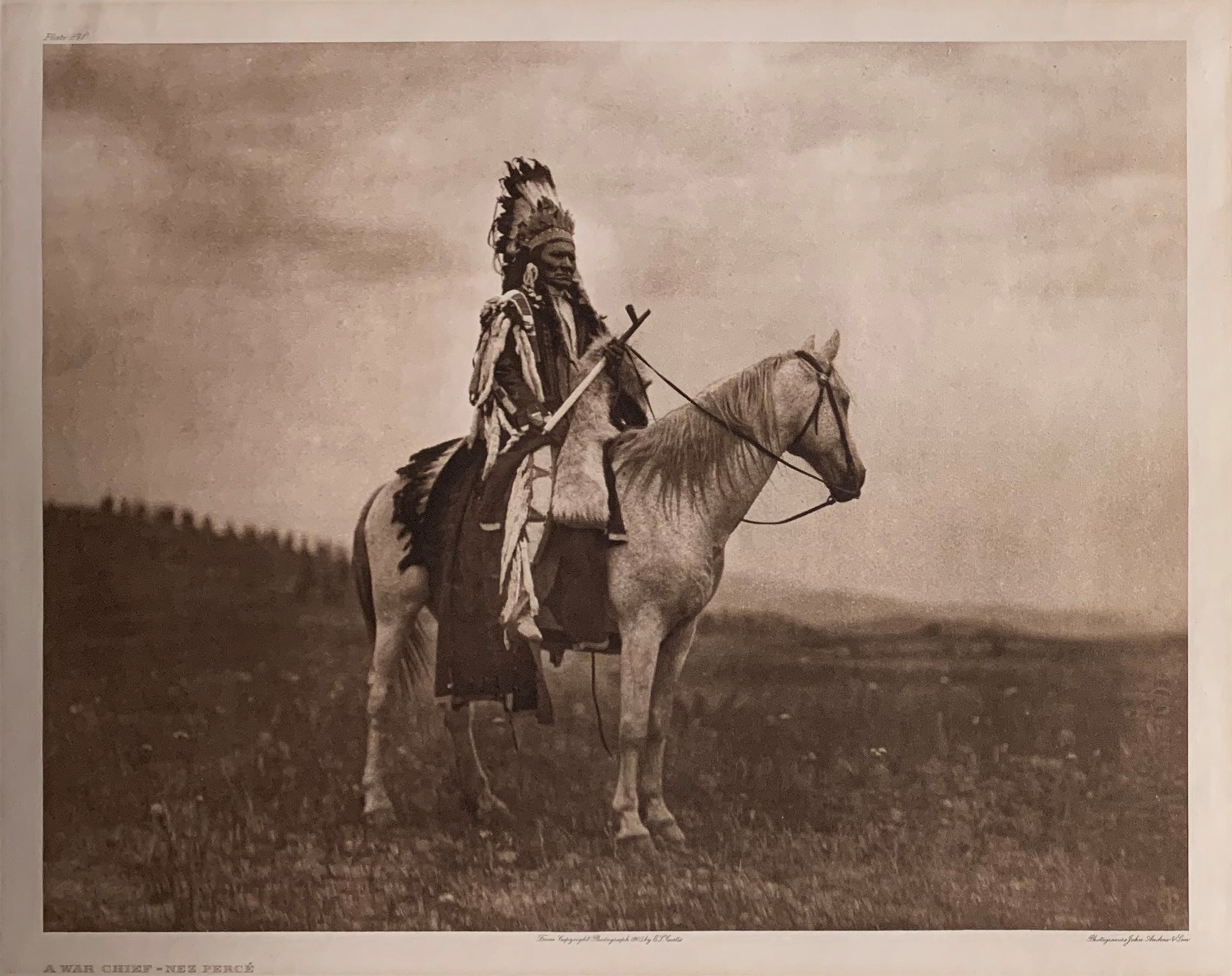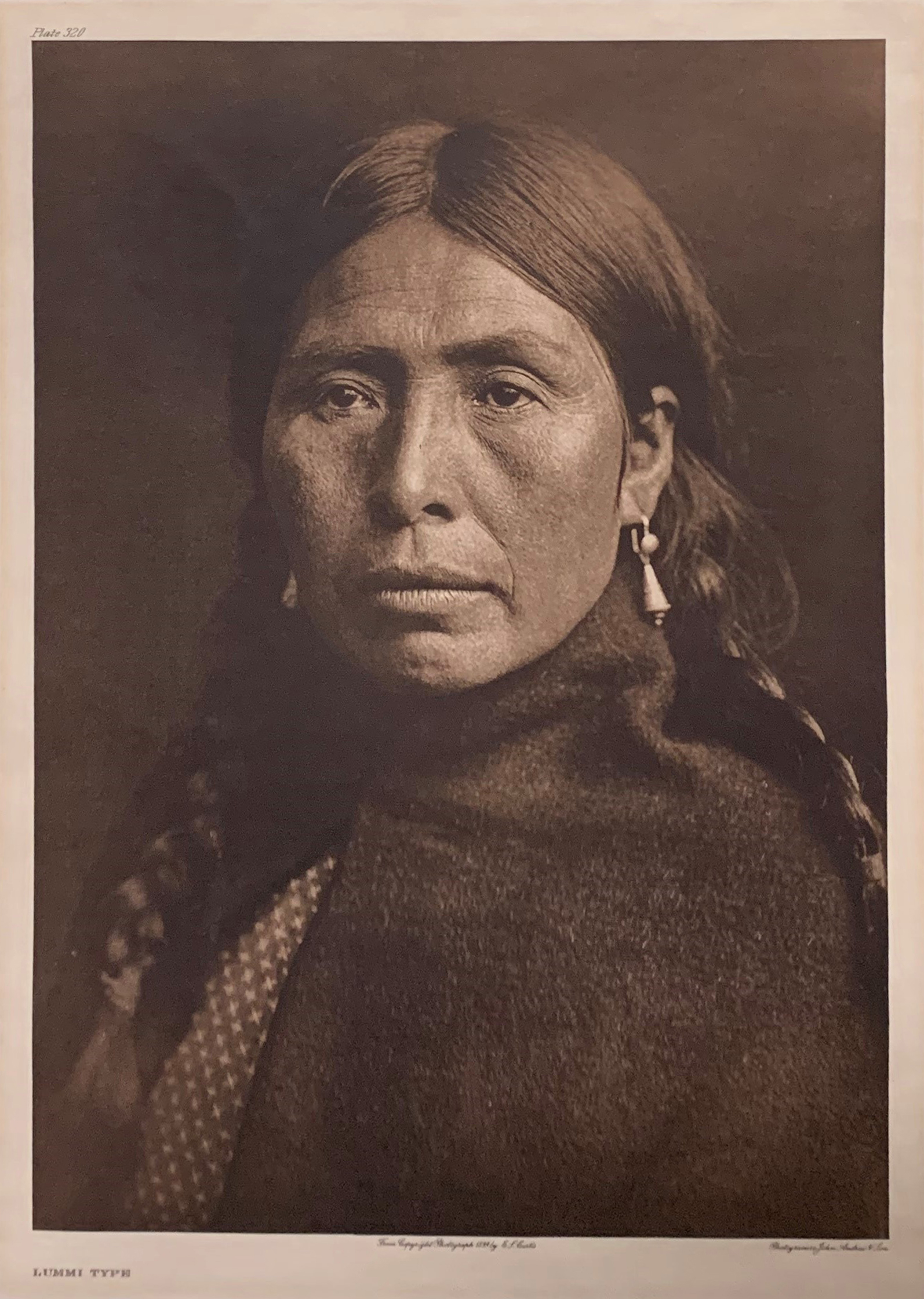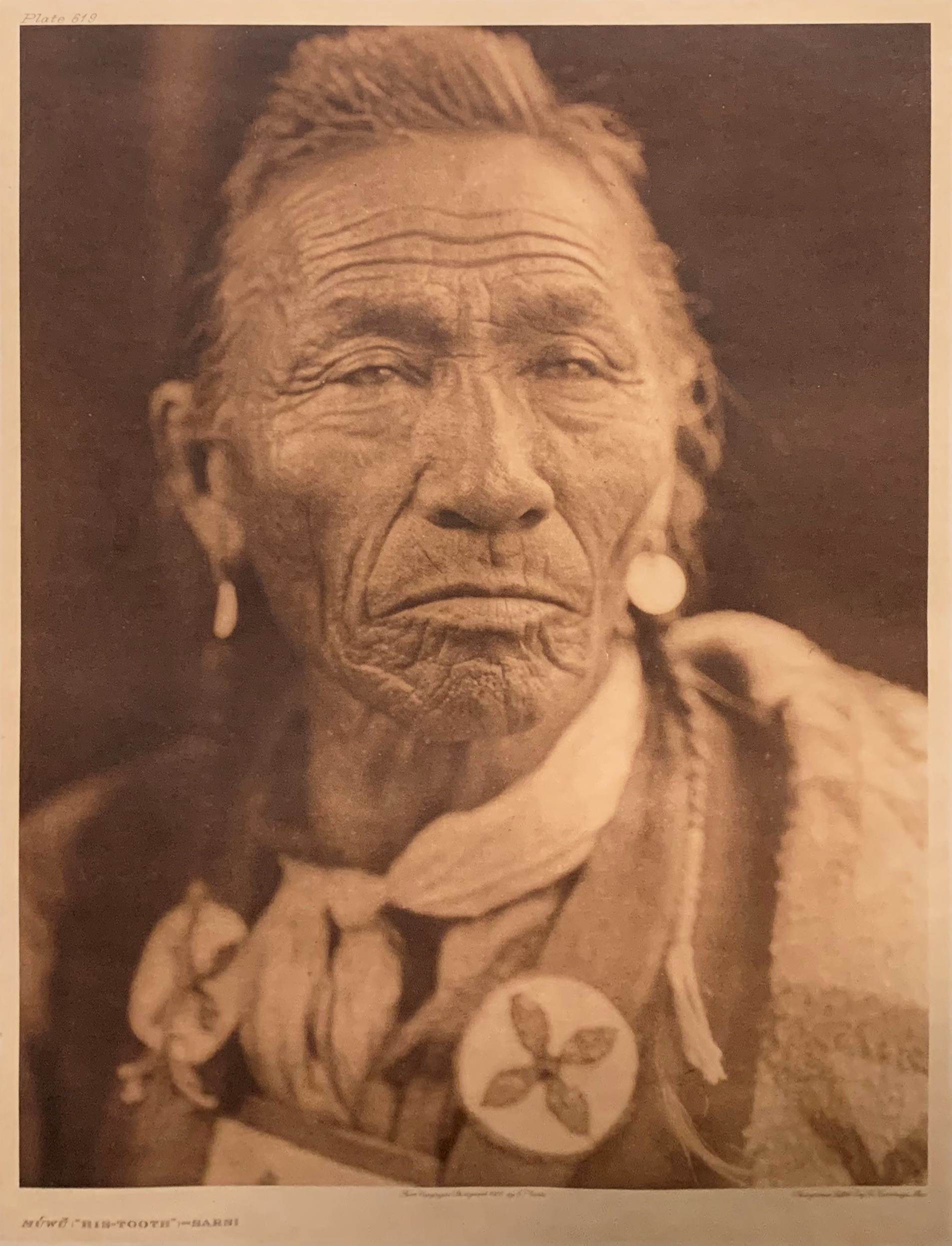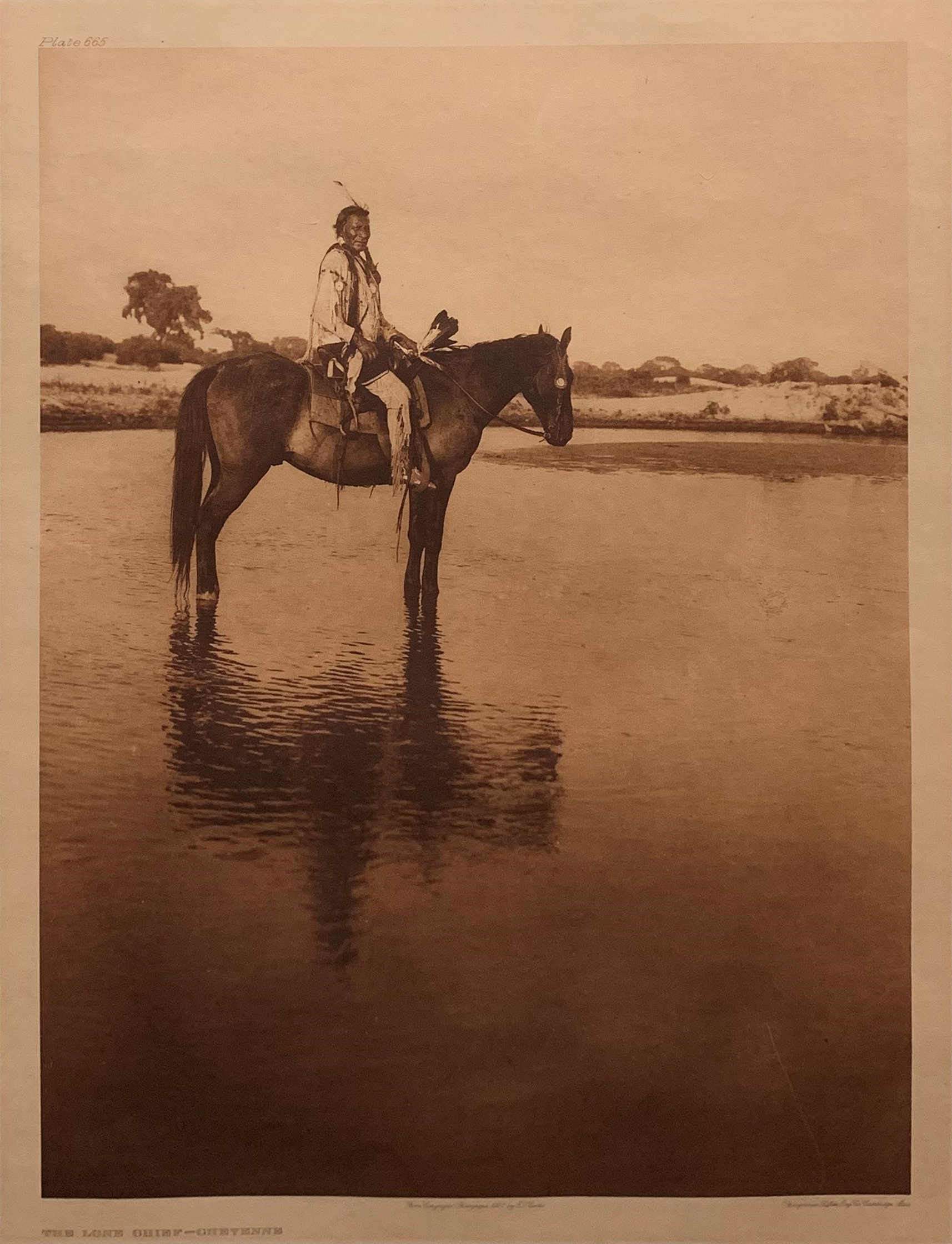Edward S. Curtis
These images are from the 40-volume work, The North American Indian, 1907-30, by the American photographer Edward S. Curtis (1868-1952). They stand as accomplished examples of the photographic trends of the time. However, Curtis' work can now be criticized as presenting a romantic version of "a vanishing race" that included incorrect cultural objects and no documentation of the reality of Native American life in the early 20th century.
The photogravures are not currently on display.
Edward Sheriff Curtis
Edward Sheriff Curtis (1868 - 1952) was an American photographer and ethnologist whose work focused on Native Americans and the American west. Curtis was born in Whitewater, Wisconsin, and moved to Minnesota around the age of six. Early on, he developed an interest in photography and even built his own camera.
In 1885 he began an apprenticeship as a photographer and continued in lens-based work his entire career (including video work in the film industry). Beginning in 1895, Curtis began his life's pursuit of photographing the indigenous peoples of North America. At about this same time he invented the gold and silver photo processes, later known as goldtone and silver tint.
In 1906 Curtis received the first funding support from J.P. Morgan for a series on the North American Native American which grew to be 20 volumes and 1500 photographs. The final volume was published in 1930. Northwestern has made the entire series of Curtis's work available online.
Slow Bull Ogalala
Edward S. Curtis
Photogravure
26" h. x 20"
1987.1.35
Details: This is a photo of Slow Bull of the Teton Sioux, the Yanktonai. It is plate No. 84 in the North American Indian, Volume 3. The original photogravure, shown, was produced by John Andrew and Son, c. 1907.
Red Cloud - Ogalala
Edward S. Curtis
Photogravure
26" h. x 20"
1987.1.36
Details: This is a photo of Red Cloud - Ogalala of the Teton Sioux, the Yanktonai. It is plate No. 103 in the North American Indian, Volume 3. The original photogravure, shown, was produced by John Andrew and Son, c. 1905.
Winter - Apsaroke
Edward S. Curtis
Photogravure
20" h. x 26"
1987.1.37
Details: This is a photo of Winter - Apsaroke of the Crows. It is plate No. 127 in the North American Indian, Volume 4. The original photogravure, shown, was produced by John Andrew and Son, c. 1908. Description by E. S. Curtis: "In the thick forests along the banks of mountain streams the Apsaroke made their winter camps."
In a Piegan Lodge
Edward S. Curtis
Photogravure
20" h. x 26"
1987.1.38
Details: This is a photo of the Piegan of the Cheyenne of the Arapaho. It is plate No. 188 in the North American Indian, Volume 6. The original photogravure, shown, was produced by John Andrew and Son, c. 1910. Description by E. S. Curtis: "Little Plume with his son Yellow Kidney occupies the position of honor, the space at the rear opposite the entrance. The picture is full of suggestion of the various Indian activities. In a prominent place lie the ever-present pipe and its accessories on the tobacco cutting-board. From the lodge-poles hang the buffalo-skin shield, the long medicine-bundle, an eagle-wing fan, and deerskin articles for accoutering the horse. The upper end of the rope is attached to the intersection of the lodge-poles, and in stormy weather the lower end is made fast to a stake near the center of the floor space."
War Chief: Nez Perce
Edward S. Curtis
Photogravure
20" h. x 26"
1987.1.39
Details: This is a photo of the Nez Perces of Wallawalla, Umatilla, Cayuse. It is plate No. 271 in the North American Indian, Volume 8. The original photogravure, shown, was produced by John Andrew and Son, c. 1905.
Lummi Type
Edward S. Curtis
Photogravure
26" h. x 20"
1987.1.40
Details: This is a photo of a Salishan tribal member of the coast of the Chimakum and the Quilliute. It is plate No. 320 in the North American Indian, Volume 9. The original photogravure, shown, was produced by John Andrew and Son, c. 1899. Description by E. S. Curtis: "The Lummi held considerable territory in the vicinity of Lummi bay, Washington, as well as many of the San Juan islands."
Muwu ("His Tooth") - Sarsi
Edward S. Curtis
Photogravure
26" h. x 20"
1987.1.41
Details: This is a photo of Muwu ("His Tooth") - Sarsi, a Chipewyan of the Western woods Cree. It is plate No. 619 in the North American Indian, Volume 18. The original photogravure, shown, was produced by Suffolk Engraving Co., c. 1926. Description by E. S. Curtis: "The childhood nickname, His Tooth, completely supplanted the formally bestowed Star Child."
The Lone Chief - Cheyenne
Edward S. Curtis
Photogravure
26" h. x 20"
1987.1.42
Details: This is a photo of Lone chief - Cheyenne of the Indians of Oklahoma, the Wichita of the southern Cheyenne, the Oto, the Comanche. It is plate No. 665 in the North American Indian, Volume 19. The original photogravure, shown, was produced by Suffolk Engraving Co., c. 1927.
Old Warrior - Arapaho
Edward S. Curtis
Photogravure
26" h. x 20"
1987.1.43
Details: This is a photo of Old Warrior - Arapaho of the Indians of Oklahoma, the Wichita of the southern Cheyenne, the Oto, the Comanche. It is plate No. 673 in the North American Indian, Volume 19. The original photogravure, shown, was produced by Suffolk Engraving Co., c. 1927. Description by E. S. Curtis: "The Arapaho, of Algonquian stock like the Cheyenne, are divided into Northern and a Southern tribe, the former living on the Wind River reservation in Wyoming and the latter on the reservation assigned to them and the Cheyenne in the present Oklahoma in 1867."
